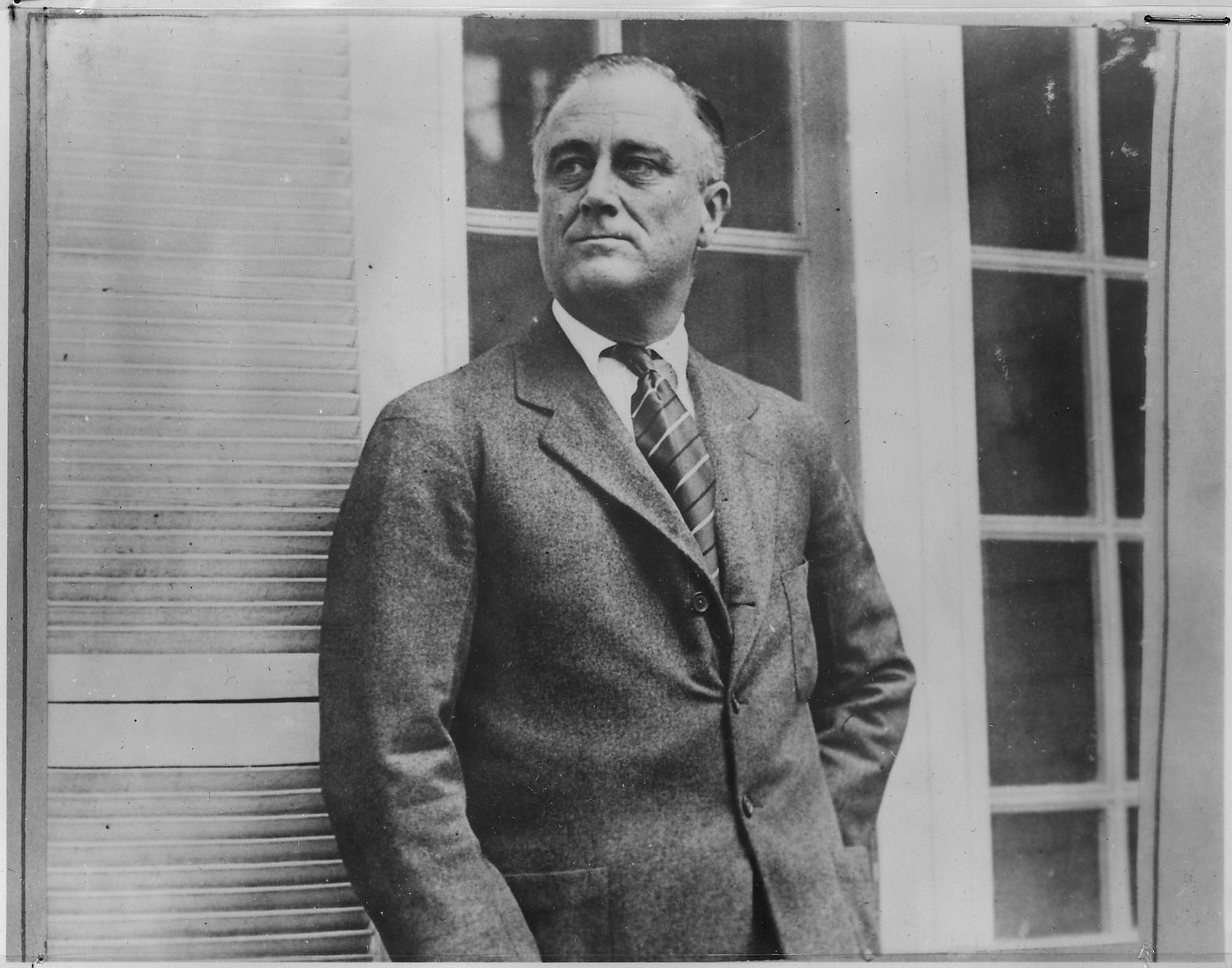Early Life and Education (1882-1903)
Birth and Family Background
Franklin Delano Roosevelt was born on January 30, 1882, in
Hyde Park, New York, to James Roosevelt and Sara Delano Roosevelt.
Raised in a privileged environment, he was their only child and received private
tutoring at home until age 14. [1]
Education
At 14, Roosevelt enrolled at the Groton School in Massachusetts, where
he was influenced by headmaster Endicott Peabody's emphasis on public service.
He then attended Harvard University, graduating in 1903 with a degree
in history. [1]
He briefly studied law at Columbia Law School but left after passing
the bar exam in 1907. [1]
Early Political Career (1905-1920)
Marriage and Family
On March 17, 1905, Roosevelt married his fifth cousin once
removed, Eleanor Roosevelt, niece of President Theodore Roosevelt.
They had six children, five of whom survived into adulthood. [1]
Political Beginnings
Roosevelt entered politics as a Democrat, winning a seat in the New York
State Senate in 1910. He later served as Assistant Secretary of the
Navy under President Woodrow Wilson from 1913 to 1920, gaining valuable
administrative experience. [1]
Polio and Personal Challenges (1921-1928)
In 1921, Roosevelt contracted polio, resulting in permanent paralysis from the waist down. Demonstrating resilience, he underwent extensive therapy and founded a rehabilitation center in Warm Springs, Georgia. His determination to overcome physical limitations inspired many and bolstered his public image. [1]
Governor of New York (1929-1932)
Roosevelt was elected Governor of New York in 1928. During his tenure, he implemented progressive policies to combat the effects of the Great Depression, including unemployment relief and public works programs, setting the stage for his New Deal initiatives as president. [1]
Presidency and the New Deal (1933-1941)
Election and Early Actions
In 1932, Roosevelt was elected the 32nd President of the United States. He launched
the New Deal, a series of programs aimed at economic recovery, financial
reform, and social welfare. His administration established agencies like the
Social Security Administration and the Works Progress Administration.
[1]
Leadership Style
Roosevelt's "fireside chats" and confident demeanor helped restore public confidence
during the nation's economic crisis. His policies redefined the role of the
federal government in American life. [1]
World War II Leadership (1941-1945)
Entry into War
Following the Japanese attack on Pearl Harbor on December 7, 1941,
Roosevelt addressed Congress, calling it "a date which will live in infamy,"
leading to a formal declaration of war. [2]
Alliances and Strategy
Roosevelt played a crucial role in forming the Allied coalition with Britain
and the Soviet Union. He participated in key conferences, including those at
Tehran and Yalta, to strategize the war's progression and post-war plans. [3]
Death and Legacy (1945)
On April 12, 1945, while at his retreat in Warm Springs, Georgia, Roosevelt suffered a cerebral hemorrhage and passed away. Vice President Harry S. Truman succeeded him. Roosevelt's death occurred just weeks before the end of World War II in Europe. [4]
Impact and Historical Significance
Franklin D. Roosevelt's presidency transformed the American political landscape. His New Deal policies expanded the federal government's role in the economy, and his leadership during World War II positioned the United States as a global superpower. He remains the only U.S. president elected to four terms, a precedent that led to the 22nd Amendment, limiting presidents to two terms. [5]
